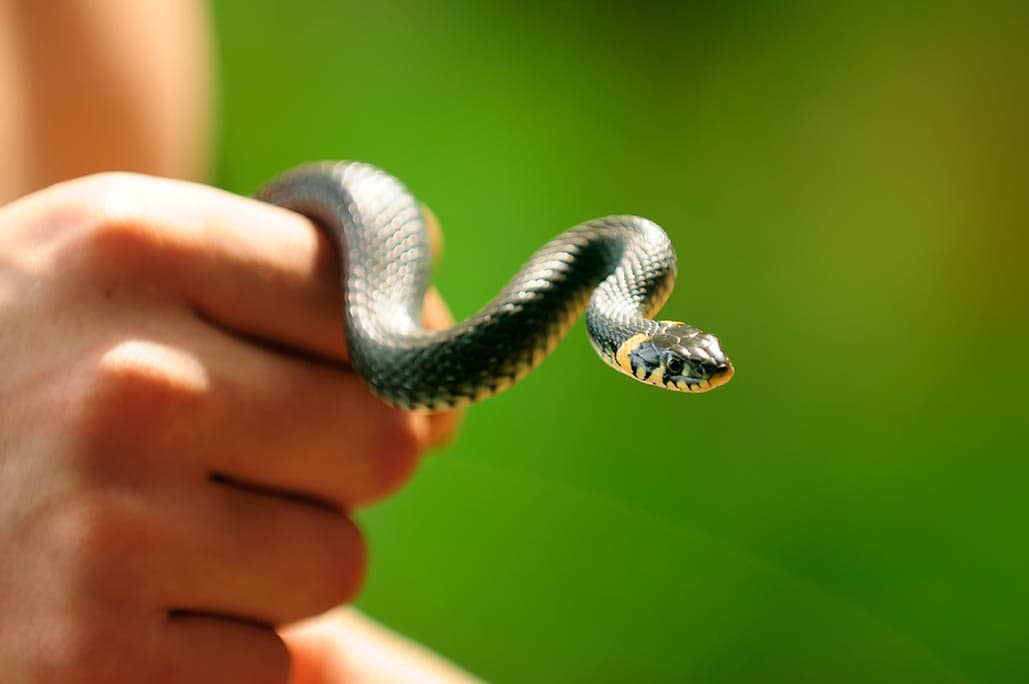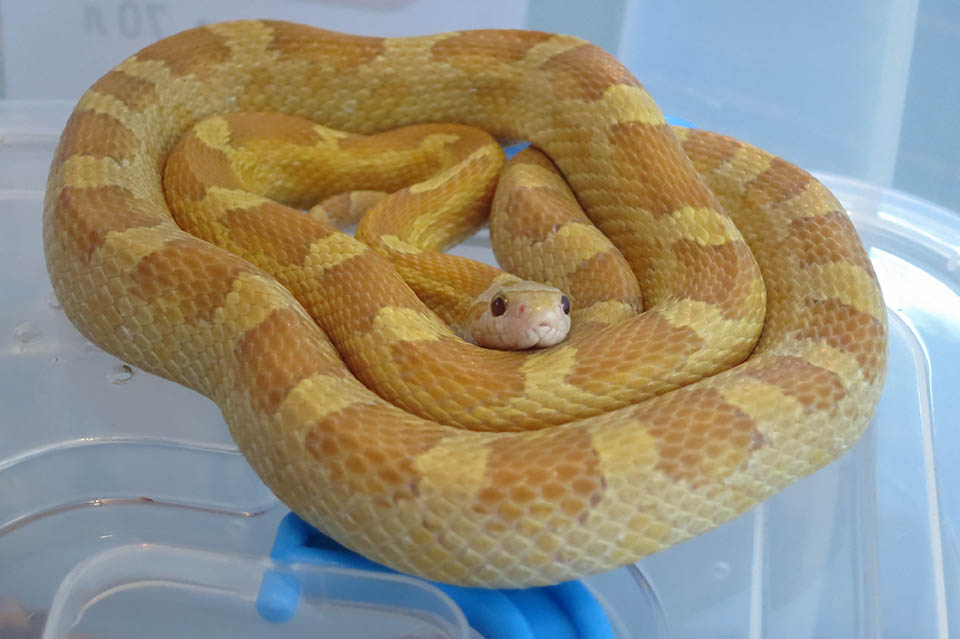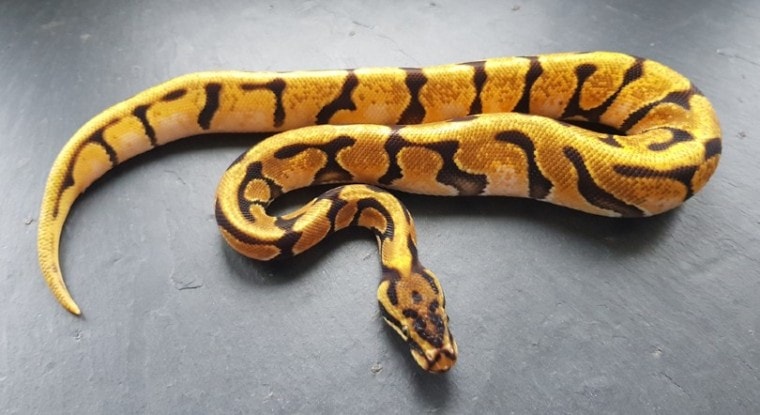
The ball python is native to West and Central Africa, where it inhabits grasslands, shrublands, and open forests. These snakes are among the most popular in the pet trade and can make great pets for reptile keepers of any skill level. They come in a variety of color morphs and only reach around 4 to 5 feet when fully grown. They are also often docile and easy to care for.
Since each snake species is unique and has specific care requirements, it’s important to understand the particular needs of the pet snake that you are interested in keeping so it can live a long, healthy life in your care.
Habitat & Setup for a Ball Python
Having the proper habitat and setup is an essential part of your ball python’s care. Captive reptiles need their environment to mimic what their life in the wild would be like. To get started on the right foot, make sure you get everything that you need to have their new home all set up just how they need it.
Enclosure
The size of your ball python’s enclosure will be dependent on the size they are when you bring them home. It is highly recommended to keep baby ball pythons in an enclosure no larger than 15 and 20 gallons. This will help them feel safer and more secure in their new habitat, and you can increase the size as they age and grow.
Adults often reach 4 to 5 feet when fully grown and will typically require an enclosure between 40 and 50 gallons at the bare minimum. Not all enclosures will be measured in gallons, though, in which case, you must search for the appropriate dimensions for the size of your snake. Most adult ball pythons will need an enclosure that measures at least 60 inches in length, a minimum of 12 inches in height, and 14 inches in width.
These snakes will spend the majority of their time curled up in their hide, so you will need to have two hides in their habitat that are appropriate to the snake’s age and size. One side should be placed on the cool side of the enclosure and another on the warm side. This will allow your ball python to regulate their body temperature as needed.
A water dish full of clean, fresh water should be available at all times. Ideally, the dish should be large enough for your snake to soak in. Ball pythons don’t require any trees or habitat décor to climb, since they are ground-dwelling snakes.
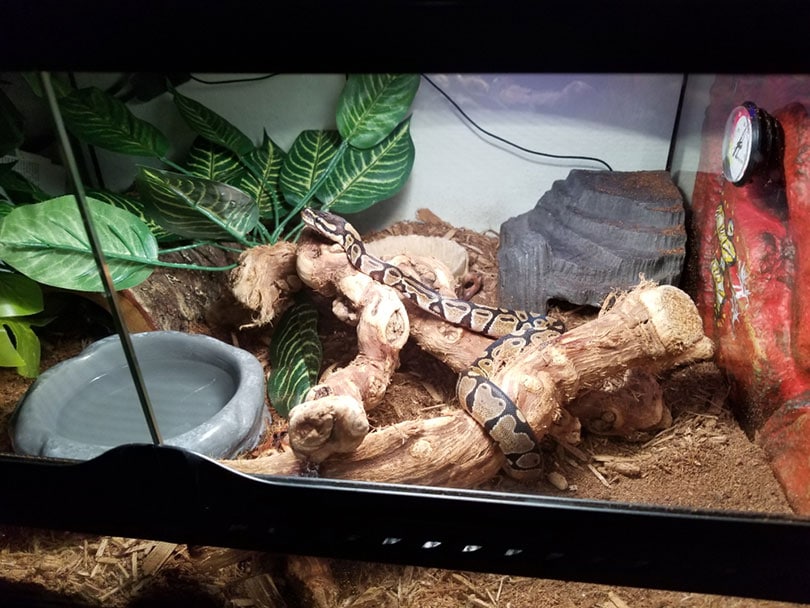
Substrate
Various types of substrate can be used in a ball python’s habitat. Some keepers choose to use newspapers or paper towels, but for a more naturalistic type of substrate, you can use coconut fiber, aspen chips, cypress mulch, or fir bark.
Avoid using sand or cedar in a ball python’s enclosure. Sand can easily be ingested during feeding and can lead to impaction, which is potentially fatal. Cedar is highly toxic to snakes and other reptiles due to the natural oils and fumes within the wood.
Humidity
Maintaining the proper humidity is important for proper shedding and the overall health and well-being of your ball python. The enclosure needs to be kept at about 60% humidity for this species and can be maintained by misting the enclosure with fresh, clean water, slightly dampening the substrate, or adding dampened sphagnum moss.
Placing the water dish on the hot side of the enclosure is another option. This will cause the water to evaporate more quickly, releasing moisture into the air. You can keep track of humidity by using a hygrometer. If your ball python is shedding in pieces rather than a full shed, humidity is the first thing that you want to check.
Temperature
Snakes are cold-blooded, meaning their nervous system cannot automatically regulate their body temperature regardless of environmental conditions. They must rely on external sources of heat to maintain proper body temperature.
Since pet snakes don’t have access to their natural environment, their keepers must maintain the correct temperature and humidity levels of their native climate. Ball pythons do not require any special lighting or basking area like other reptiles, but the temperature of the enclosure should be kept at an ambient temperature of approximately 82°F.
There should be a designated warm side and a designated cool side in the enclosure. The warm side can be maintained by using a heating mat, heating tape, or a radiant heat panel. The warm side should remain between 85°F and 91°F but never exceed 93°F. The cool side should be kept around 80°F and never below 75°F. You can easily monitor the temperature of the enclosure by installing a thermostat.
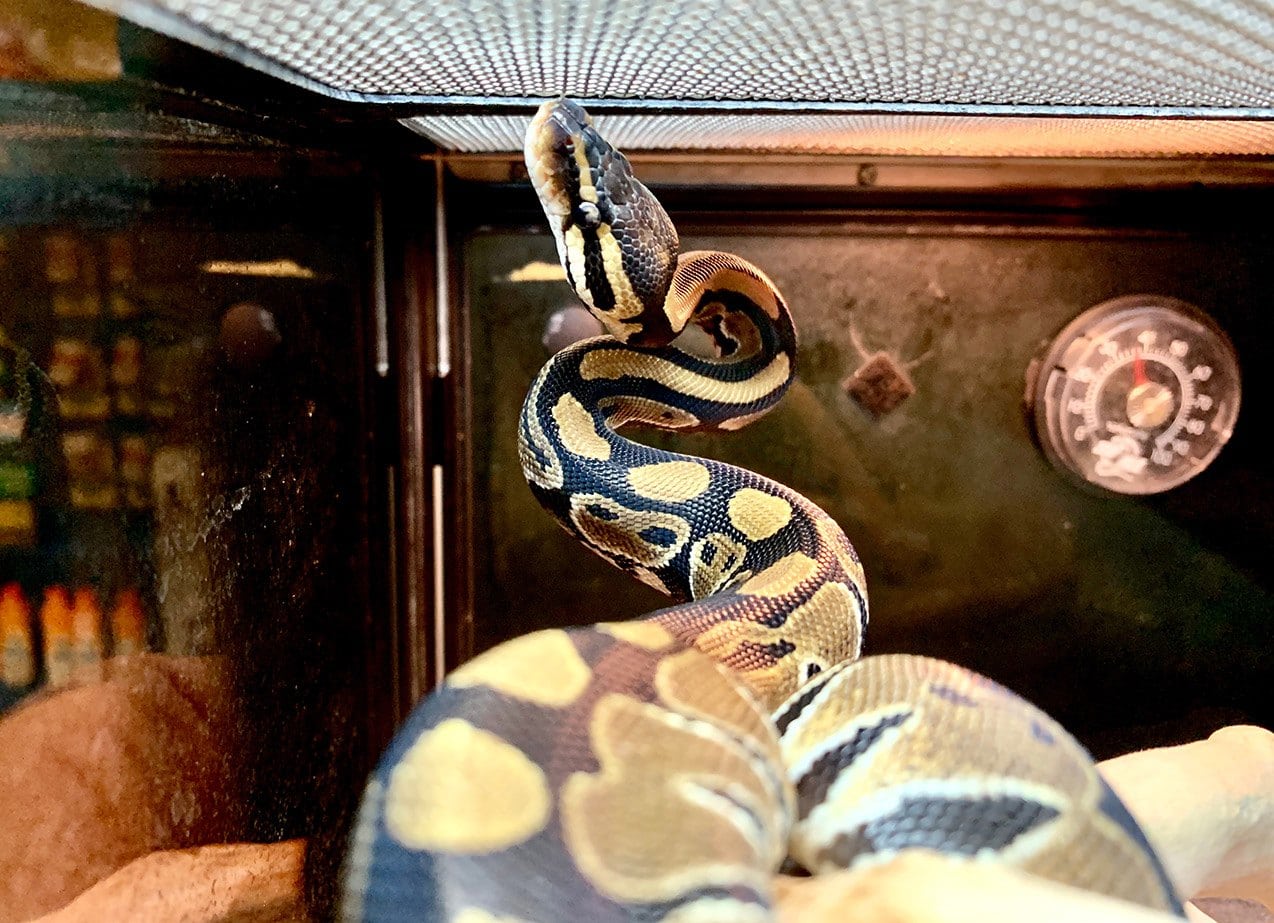
Lighting
Ball pythons do not necessarily require any special light source or basking area like other pet reptiles. It is recommended that you do your best to keep them on a night-and-day schedule by keeping the room well-lit during the day and dark at night.
Cleaning
It’s a good idea to thoroughly clean, sanitize, and replace the bedding in your ball python enclosure once every 2 to 3 months. You will need to clean up any urates, feces, shed skin, and soiled bedding as needed between the deep cleans. A clean environment will help prevent any health issues that can result from an unsanitary environment and excess bacteria.
Feeding a Ball Python
Ball pythons need to be fed a diet of appropriately sized mice or rats. Rats are the most ideal food source because the snake will get large enough that mice will be too small to suit their needs. Also, ball pythons will notoriously imprint on specific food sources.
If a baby ball python requires mice in the beginning, it is recommended to switch to rats as soon as possible to prevent the future struggle of having an adult ball python refusing to eat rats. Prey items should be no wider than the widest part of the snake’s body.
Baby and juvenile ball pythons can be fed once every 1 to 2 weeks, while adults can be fed once every 2 to 4 weeks. Frozen thawed rodents are recommended not just for ethical reasons but also for the safety of your snake. Live prey can bite and scratch, which can lead to injury and the potential for infection. However, some keepers may run into trouble with ball pythons not accepting frozen-thawed prey, especially if they were previously fed live.
If you must offer live prey, never leave your snake unattended, and remove the prey animal immediately if your snake shows no interest in eating. For the best recommendations for feeding, contact your licensed exotic animal veterinarian.
Ball pythons may go on eating strikes that can last up to a few months; this is especially common during the wintertime. If your snake refuses several feedings during the winter, it may pick back up closer to springtime. If you have any concerns about feeding, reach out to your veterinarian as soon as possible.
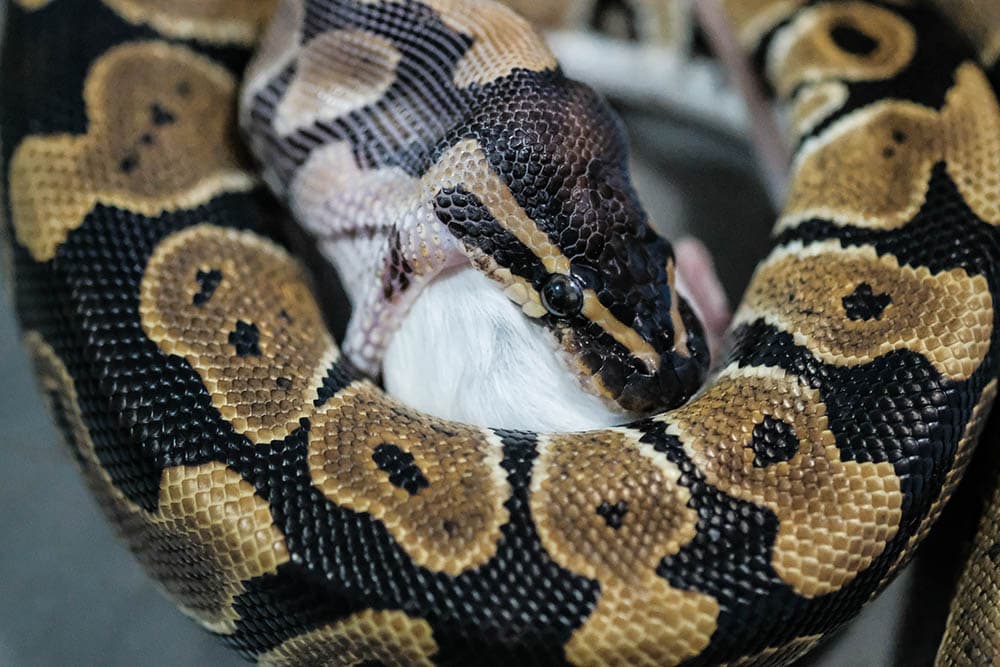
Handling Your Ball Python
Snakes do not require any amount of social interaction for their mental well-being, but regular handling will get them used to human contact and help them remain tame. Ball pythons are typically docile, but it’s a good idea to start small and handle them for only a few minutes at a time.
You can slowly work your way up to about 15 to 20 minutes, but the handling session should remain relatively brief to prevent too much stress on the snake. Aside from handling your snake safely and gently and supporting their body, there are specific handling tips that all snake owners should follow.
Wash Your Hands
Any person who is going to handle your ball python will need to wash their hands before and after handling. Not only will this help prevent any bacteria from being passed back and forth, but it also removes any scent that could cause the snake to mistake a hand for a food item.
Ball pythons use their heat-sensing pits to detect nearby prey, and since your hand is naturally warm from your body heat, this is something they will pick up on. If your hand were to smell like another pet in the household, this could confuse them and put you at risk of a bite.
Let Your New Snake Settle In
When first bringing home a new ball python, place them in the enclosure, and leave them alone with no handling for at least 1 to 2 weeks to allow them time to acclimate. The transport process and brand-new environment can be stressful for the snake, so they will need time to get comfortable before any handling begins.
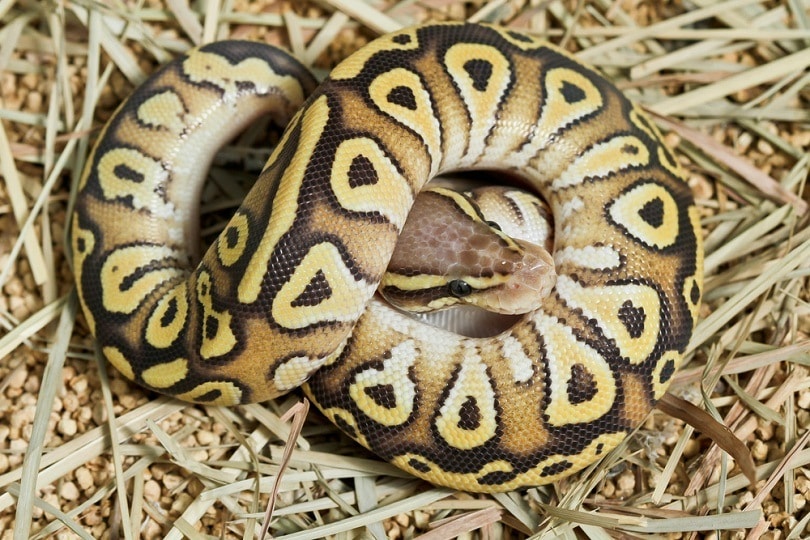
Avoid Handling Before & After a Meal
Since handling can cause your snake stress, it’s recommended that you not handle them right before a meal and for at least 24 to 48 hours afterward. Handling right before a meal could result in refusal to eat, but handling after a meal could cause the snake enough stress that they regurgitate their food.
In the wild, snakes may regurgitate recently eaten prey so they can focus their energy on escaping predation rather than digesting a meal. The stress from handling too soon is a common cause of captive regurgitation, so it’s best to prevent this problem from ever occurring.
Health & Veterinary Care
Ball pythons are generally healthy animals that can live up to 30 years with proper care. Just like with most pet snakes, the majority of health issues can be avoided with proper care and husbandry practices. That said, you should always keep an eye out for any unusual physical signs or behaviors that could indicate a health concern.
An important part of caring for your pet snake is getting established with a nearby veterinarian that offers services for reptiles. Medical issues can pop up at any time and they will need care in the event of illness or injury. Your veterinarian can also answer any questions that you may have regarding their care.
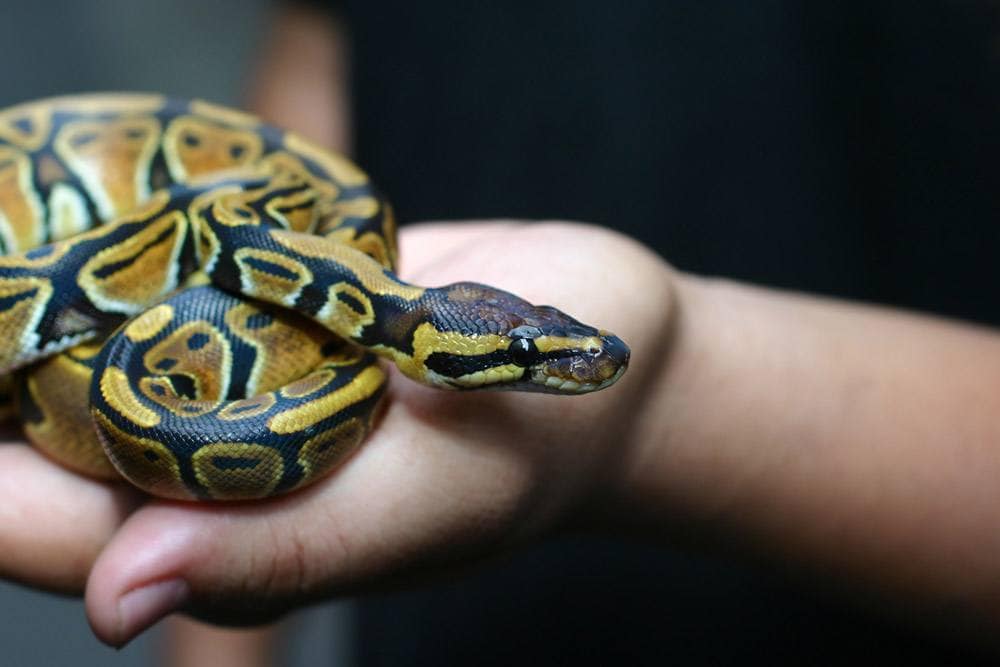
Final Thoughts
Ball pythons make great pet snakes for beginners and keepers of all experience levels. As long as proper husbandry practices are implemented and their captive environment is set up under the correct conditions for them to thrive, they make low-maintenance pets that are easy to care for and can live up to 30 years. Remember to get established with a veterinarian who works with reptiles to ensure that your snake remains healthy and well-maintained.
See also:
- Bamboo Ball Python Morph: Facts, Appearance, Pictures & Care Guide
- Calico Ball Python Morph: Facts, Appearance, Pictures & Care Guide
Featured Image Credit: Deb Davis, Shutterstock



